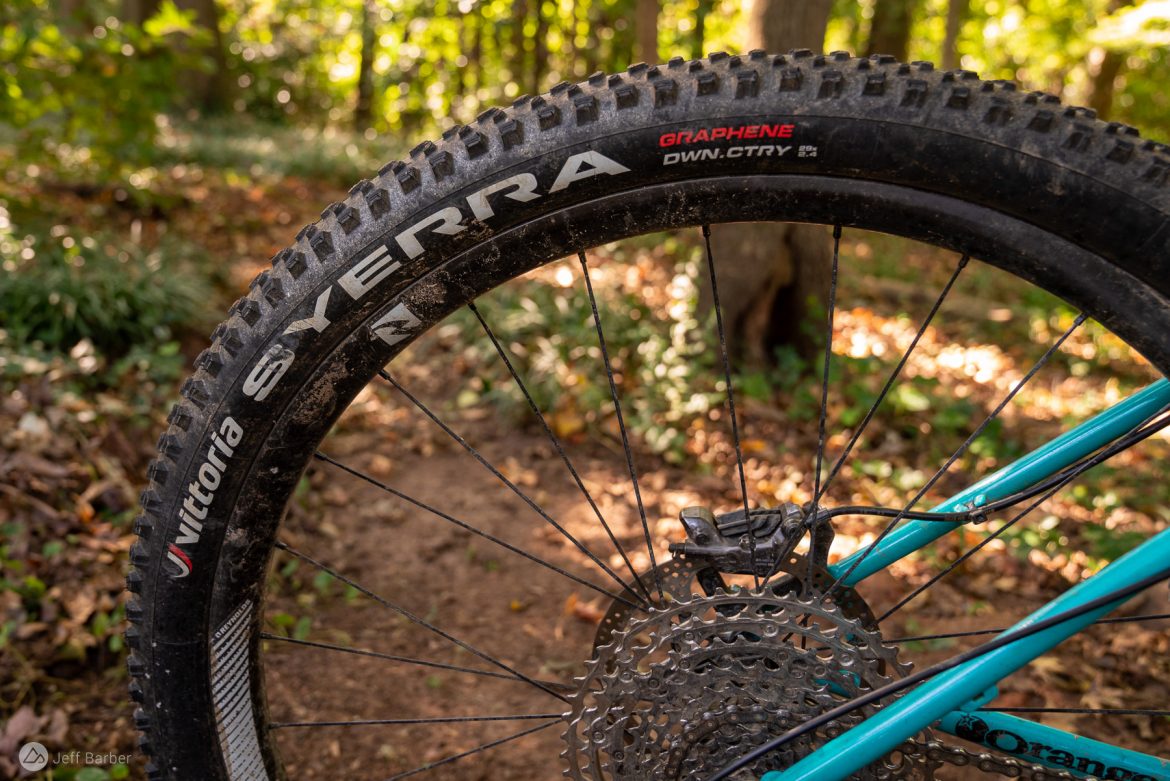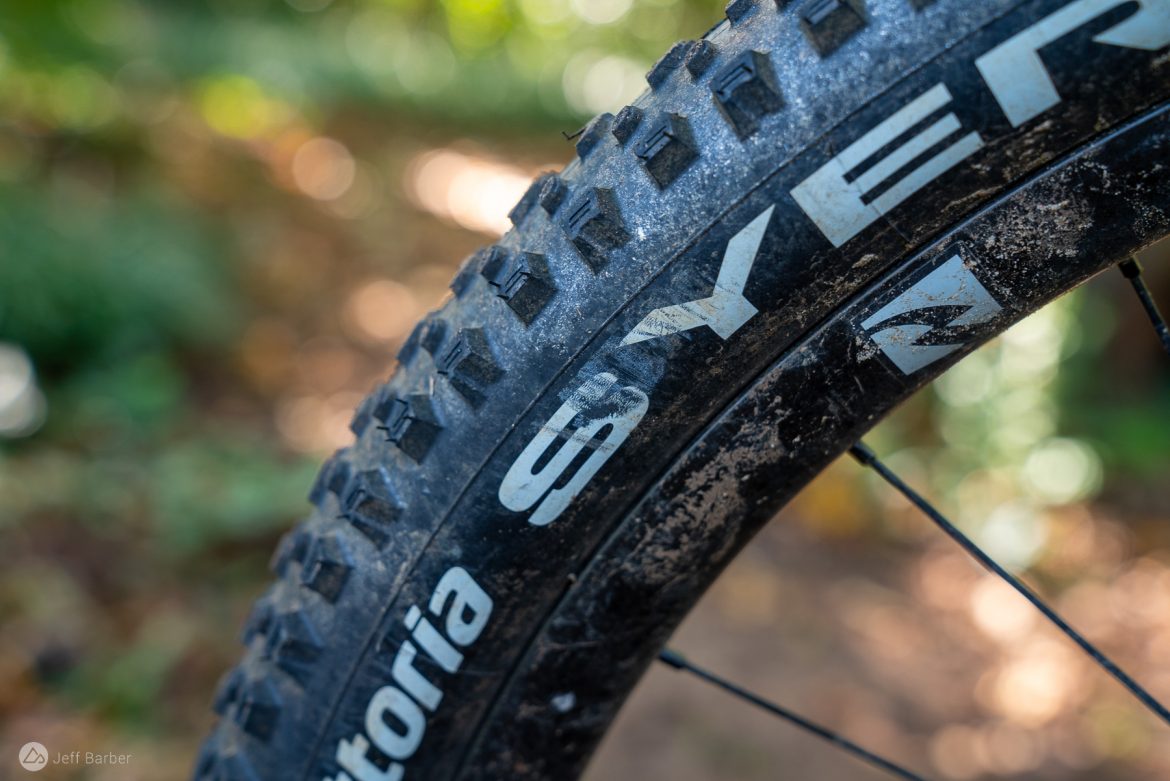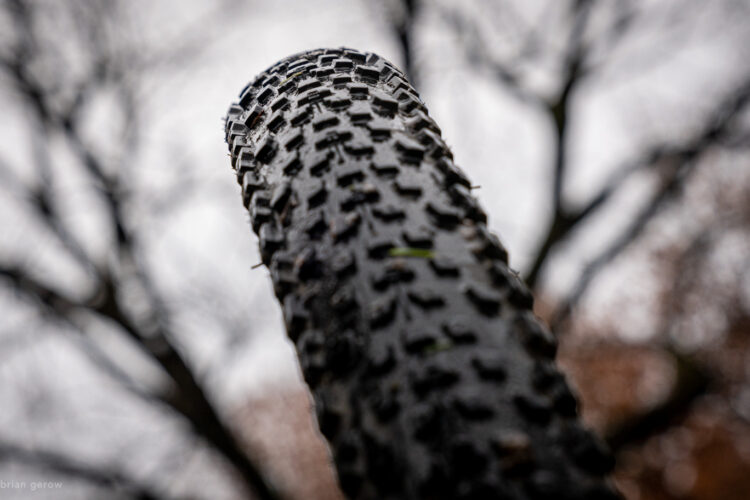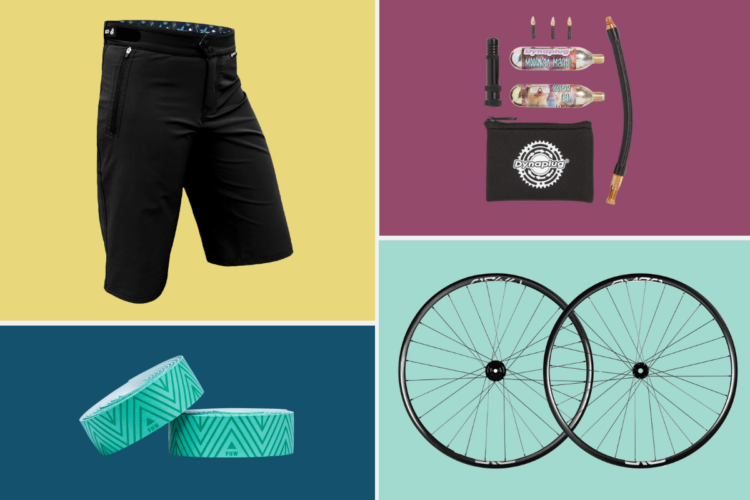
The headlines from Sea Otter breathlessly heralded the Vittoria Syerra as the “first official downcountry mountain bike [tire].” After all, the packaging and marketing materials say so, and they spell it out at least three different ways: down-country, down country, and my favorite as printed on the sidewall, DWN.CTRY. As early as 2018, and likely before that, brands were releasing their first downcountry bikes, like the Ibis DV9. But if there weren’t any downcountry tires at the time, what were those bikes rolling on?
To be upfront, this isn’t going to be an extended takedown of the term downcountry, or a rant about Vittoria’s marketing around their latest mtb tire. In fact as you’ll see in this review, I really, really like how the Syerra performs. My hope is to move beyond the hype on one side, and dismissal on the other, to uncover what this tire is really about.

On the trail
I’ve been running the Syerras front and rear for a couple weeks now and have managed to clock well over 100 miles so far. I say “so far” because unlike many of the other tires I review, I plan to keep these on my bike for a while.
The Vittoria Syerra is truly a fast-rolling mountain bike tire, especially on hardpack and other firm surfaces. This is apparent from how quiet they run, and also how well they seem to carry momentum when it’s time to freewheel. Not only are the knobs well-tuned to rolling fast, the light weight of the tire gives it a zippy feel on the trail.
Looking at the tread, it may not be obvious that the Syerra climbs well. Knob size and placement certainly play a role when it comes to climbing grip, but a tire’s contact patch is perhaps even more important. I’ve been running mine between 15 and 18psi (a bit less in the rear) and I’m making it to the top of some real stingers that I don’t always clean. Rocks, roots, loose — nothing seems to cause the Syerra to choke. Of course the tires don’t deserve all of the credit; I have been improving my fitness over the summer🙄 and our trail conditions have been good lately. But the tires are definitely a piece of the puzzle. The grippiness of the tire compounds help as well.
When it comes to the Syerra tire profile, my 30mm rims give the tire a mostly roundish shape. There’s a touch of squareness there if you squint your eyes, but to mine it mostly looks like a fast XC tire. The side knobs form a nice wall at the edge and provide excellent support in corners, and the intermediate knobs transition well between horizontal and vertical wheel positions.

Getting back to the marketing for the Syerra, the packaging suggests pairing this tire with the brand’s tire insert “for increased tire and rim protection.” To buyers that could suggest that these tires are at risk of pinch flats, but in my testing without an insert I haven’t found any reason for concern. I’ve rolled through sharp rock gardens, landed questionable hops, and pushed these hard into roots without so much as a burp. As you can see from the photo above, the tires got scuffed pretty badly, but never pinched. I haven’t had any punctures either, despite riding through thorns and unfortunately, even broken glass.
I recently mounted a front fender in anticipation of fall mud puddles, though so far the shield hasn’t been getting a lot of use with the Syerra tires. Mud practically rolls off the tire thanks to the smaller knobs with ample spacing in between. This isn’t a mud tire by any means, yet given that it doesn’t tend to pack up, I found the tread works pretty well even in greasy conditions.
Riding on these Vittoria tires brings to mind a couple other tires I’ve tested, notably the Teravail Honcho and the Maxxis Rekon / Rekon Race. In terms of ride feel, these are most similar to the Honchos with their supple ride and fast roll. Looking at the tread pattern, many will compare these to the Maxxis Ikon, though in terms of performance I think they’re more in line with the Rekon Race, which was released in 2018, around the same time as the first “downcountry” bikes.
I’ll be honest, I can get hung up on making my bike “more aggressive” when it’s time to swap parts, and tires are an easy place to make that happen. Fatter, knobbier, and thicker are all good things when it comes to tires, until you consider the adjectives on the other side of the coin: slower, louder, and heavier. See? It’s all in the marketing spin.
I probably ride mountain bike tires that are too aggressive for my local trails and riding style; the Syerras may not look like rad moto tires, but they sure feel good.

Tire Construction
Vittoria pulled out all the stops designing and constructing the Syerra. It’s a four compound mtb tire with a dual compound center tread, and dual compound side tread. The 60tpi casing is an interesting choice for such a lightweight and supple tire, but given that it straddles the XC and trail worlds, it’s a reasonable one.
Inside, Vittoria includes a nylon layer for added puncture protection. Along the bottom of the sidewall there’s also a rubber insert for “anti-pinch sidewall protection.”

Knob spacing is fairly wide, and each knob is shaped and siped for maximum utility. The tread height is best described as moderate, and the knobs are small-ish in size.
The Vittoria Syerra is offered in just one size — 29×2.4 — and it’s a directional tire that is recommended for both front and rear use. The brand claims the tire weighs 850g, though my samples weighed 870 and 890g down here in the real world.
Pros and cons of the Vittoria Syerra mtb tire
Pros
- Fast rolling and lightweight
- Surprisingly durable
- Good ride feel
Cons
- Only offered in a single size
- Pigeon-holed as a downcountry tire
Vittoria Syerra Tire Review Conclusion
Unfortunately the term downcountry is a divisive one in mountain biking, at a time when many of us are craving more unity. The Vittoria Syerra is a great mtb tire, one that excels at rolling through technical terrain without slowing riders down when it’s time to pedal (and yes, all of us pedal at some point). This isn’t a tire that goes on a certain type of bike; it’s an all-conditions tire that fits a fairly wide range of riding styles from XC to trail. My advice is to peel off the downcountry label and just ride.
- Price: $79.99
- Available at Backcountry and other retailers



















